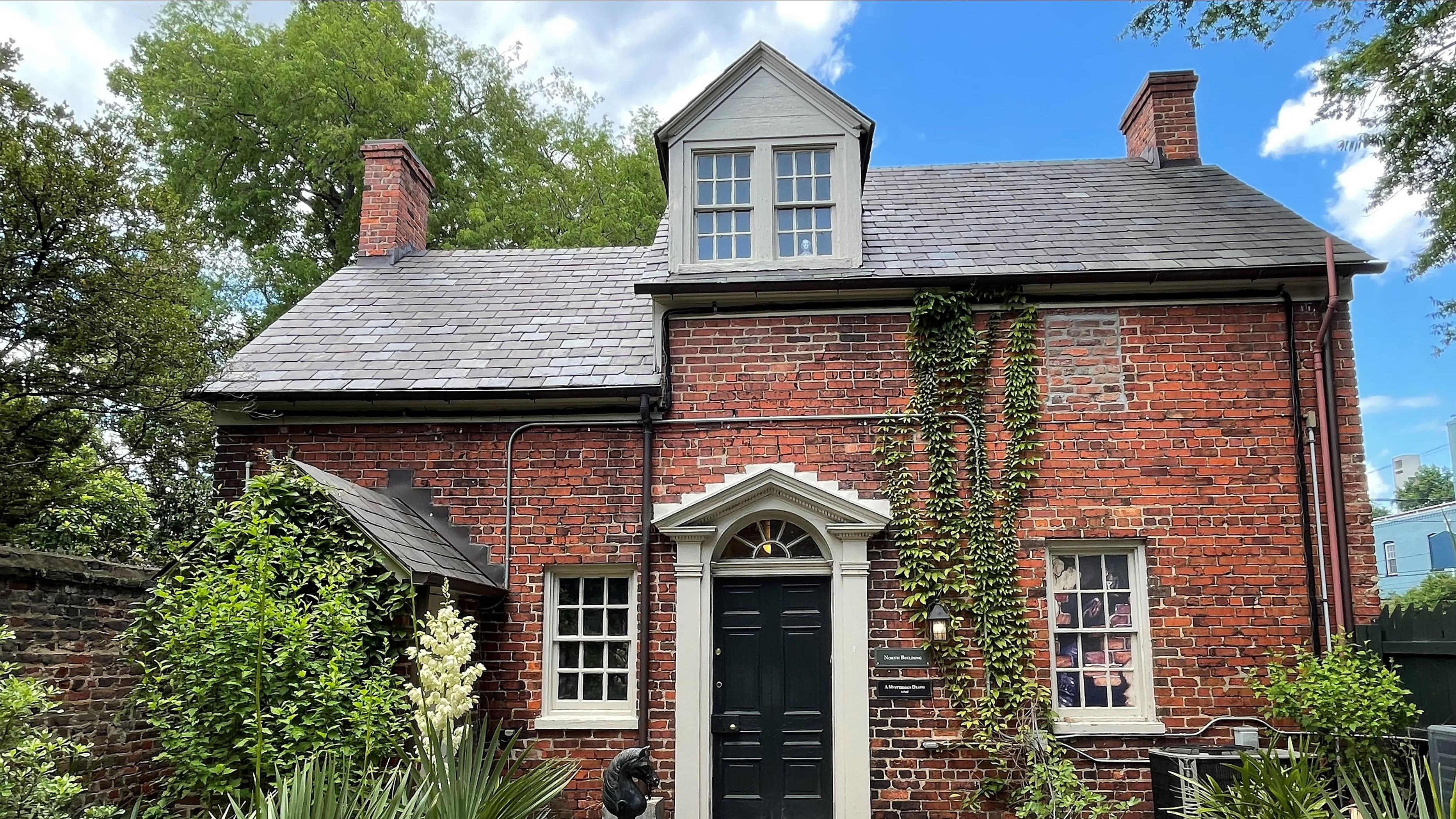
The Poe Museum in Richmond, Virginia is dedicated to sharing Poe’s life story, including artefacts and well-documented research into the writer’s life.
Credit: Virginia Tourism Corporation.
“How would you die in a Poe story,” asks the wheel of misfortune. I give it a spin and, after vacillating between ‘poisoned’ and ‘set on fire’, it settles on the latter. The other options are equally terrifying, including ‘plague’, ‘axe into brain’, and my personal nightmare, ‘buried alive’. It is an appropriately chilling end to my time at The Poe Museum in Richmond, Virginia.
Man of the crowd
Edgar Allan Poe was born in Boston, Massachusetts on January 19, 1809 (2024 marks his 215th birth anniversary). After his father abandoned the family in 1810 and his mother’s death the following year, two-year-old Edgar was taken in by Richmond-based John and Frances Allan. Although they never formally adopted him, they gave him the name Edgar Allan Poe and he lived with them well into young adulthood. Poe attended the University of Virginia but left midway for Boston after becoming estranged from his foster father over his (Edgar’s) gambling debts. There, he published his first book of poetry Tamerlane and Other Poems under the pseudonym ‘A Bostonian’. After a brief military career (that ended in a court martial), Poe moved to Baltimore and shifted from writing poetry to short stories, publishing his first horror story Metzengerstein in the Richmond-based The Southern Literary Messenger.
He returned to Richmond to work for the Messenger, which is when he married his cousin Virginia (she was 13, he was 27). In 1838, Poe moved to Philadelphia where he enjoyed his prime years of literature, writing The Black Cat, The Fall of the House of Usher, The Murders in the Rue Morgue, etc., the last considered the first modern detective story. He was also one of the first to write stories of deep psychological horror, earning him the epithet ‘The Master of Macabre’. Poe’s most famous piece The Raven was published in 1845 and made him an overnight success. His wife Virginia died of tuberculosis in 1847 while the couple lived in New York, after which Poe returned to Richmond where he rekindled his childhood romance with Elmira Royster Shelton.
Poe’s death in Baltimore is shrouded in mystery. He had been found drunk, delirious, and wearing someone else’s clothes in a tavern called Gunner’s Hall and was taken to Washington University Hospital. He died on October 7, 1849, and the cause of death was given as phrenitis (inflammation of the brain), which was commonly used when the true cause was unknown. Because of these mysterious circumstances, and Poe’s literary persona, there is much speculation about the true manner of his death. More than 26 theories on his demise have been published, including mercury poisoning, rabies, syphilis, epilepsy, and more.
House of Poe
Poe’s foster home no longer stands, but in April 1922, the Poe Museum opened in The Old Stone House, the oldest residential building (circa 1740) still standing in Richmond. It holds one of the world’s largest collections of Poe memorabilia, some 4,000 items including original manuscripts, letters, first editions, and artefacts. The museum is spread over three buildings, each focused on a different theme — childhood, in the Old Stone House; career, in the Elizabeth Arnold Poe Memorial Building; and death, in the North Building. Given the sheer number of exhibits, it’s no wonder that all the rooms are cluttered but there’s a certain charm to it. I feel as if I’m wandering around Poe’s lived home — here stands his childhood bed, there his travelling trunk; even the staircase in the ‘career’ room is an original, rescued
from his foster home before it was demolished. It creaks a bit as I walk up to the cosy library with period-appropriate furniture and several paintings, including one of a larger-than-life black raven.
Elsewhere around the museum, there is a bust of Poe, a lock of his hair, his engraved walking stick, a pen knife, and a fragment of his original coffin. Even when extreme poverty forced him to survive on bread and molasses, Poe liked to dress well as evidenced by a lavish silk waistcoat and a pair of socks on display — judging by the latter, Poe had surprisingly small feet. One of the rooms holds an upright coffin inviting you to step inside and imagine being buried alive. I give it a hard pass and instead focus on Poe’s pocket watch that he owned while he was writing his popular horror story The Tell-Tale Heart, which repeatedly references a watch. There’s also an engagement ring engraved with ‘Edgar’ that Poe gave Shelton; sadly, he died just ten days before their wedding would have taken place.
Evermore
I step outside the ‘death’ room and into the brick-walled memorial garden. There’s a shrine to Poe at the far end built of bricks and building materials from the office of The Southern Literary Messenger, which was located nearby. The museum’s two jet-black cats — Edgar and Pluto — are in the garden sunning themselves. In November 2012, they were found there as tiny kittens, and since then, have been cared for by the museum. It’s fitting that they have found a home here since Poe loved cats (despite Pluto’s fate in ‘The Black Cat’).
With the opening stanza of To One in Paradise playing in my head — “A green isle in the sea, love; A fountain and a shrine; All wreathed with fairy fruits and flowers; And all the flowers were mine.” — I look at Poe’s bust in the shrine; after a complicated life and an untimely death, he finally seems at peace. After all, he’s home!